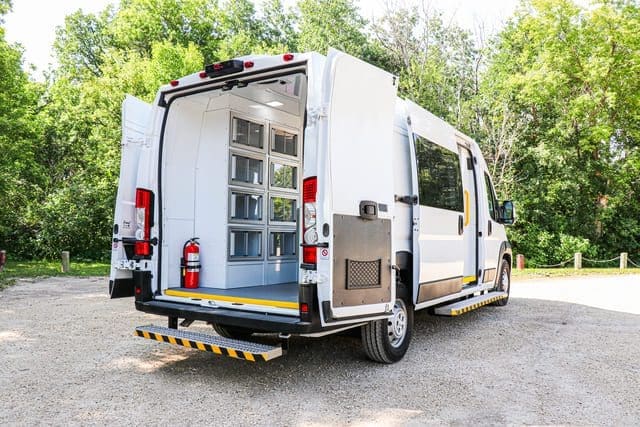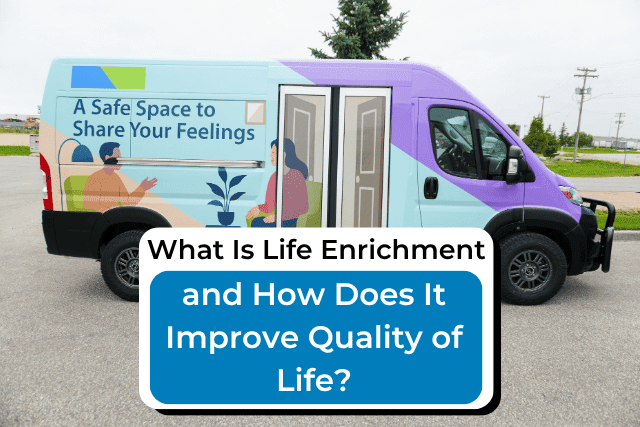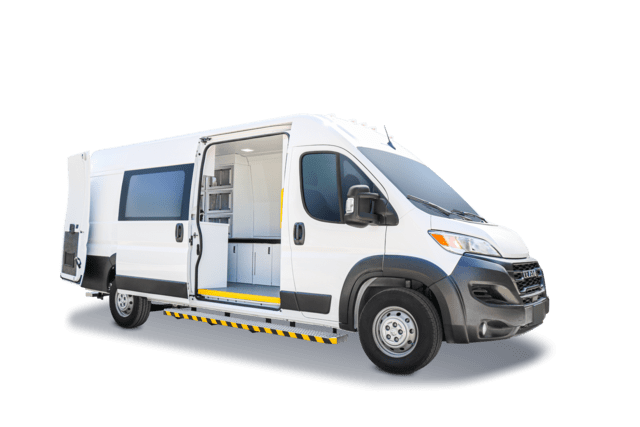Mobile medical vehicles in North Dakota are filling a big gap for aging residents. In places like Bottineau, Rolla, or Garrison, getting to a hospital for a checkup or lab work might mean a 90-minute drive. That’s both inconvenient and even risky. And if you’re part of a healthcare program, tribal health organization, or rural outreach team, you’re probably asking yourself: How do we support our seniors without uprooting their lives?
Here’s the concern: North Dakota has a large rural population, and around 17% of residents are over 65. That’s not the oldest in the country, but it’s still significant, especially when many of those folks live miles from the nearest clinic. When care is out of reach, people wait too long to get help or move away to be closer to services.
- The problem: Older adults want to stay in their homes, but distance and lack of access to care make that tough.
- The risk: Without local support, many delay checkups, miss treatments, or move away just to be closer to a clinic.
- The opportunity: Bring care to them, keep them healthy, and help them stay right where they feel safe, at home.
Our team at AVAN Mobility builds mobile health vehicles designed to close that gap. For over 10 years, we’ve worked with organizations like yours and the Community Clinic of Southwest Missouri to bring care straight to communities that need it. We’ll never push a sale just to check a box. We’re here to help you make the best choice for your team.
In this article, you’ll learn:
- How mobile clinics help seniors stay home longer
- What kind of care a mobile health unit can provide
How do mobile medical vehicles in North Dakota help seniors stay at home longer?
Mobile medical vehicles in North Dakota give seniors a better shot at staying home as they age. That means staying in familiar surroundings, keeping their independence, and avoiding the stress of moving to a bigger city just to access basic care. In towns like Carrington, Hazen, or Langdon, the nearest hospital might be hours away, especially during winter. That kind of distance makes it harder to stay on top of health.
When healthcare is far away, people delay it. Delayed care turns into missed diagnoses, unmanaged conditions, and more trips to the ER.
Mobile health clinics in North Dakota flip that around. They bring doctors, nurses, and testing equipment right into local neighborhoods. You’re not replacing hospitals. It’s about reaching people who can’t always get to one.
Mobile clinics support aging at home by offering things like:
- Regular checkups: Blood pressure checks, diabetes management, and heart monitoring
- Basic screenings: Hearing, vision, cancer pre-screenings, and more
- Vaccinations: Flu shots and other routine immunizations
- Health education: Nutrition tips, medication reviews, and chronic disease coaching
When seniors can get these services close to home, they’re more likely to stay on top of their health. That means fewer emergencies, better quality of life, and less pressure on family caregivers who would otherwise need to drive hours for every appointment.
So, if your organization is looking for a mobile medical vehicle for sale in North Dakota, it’s worth considering how it can support long-term care right where seniors live.
Up next, let’s take a closer look at what types of healthcare you can provide with a mobile health unit.
What kind of healthcare can you provide with a mobile health unit in North Dakota?
When designed around the right services, mobile medical vehicles in North Dakota can help older adults live longer, healthier lives without needing to relocate for care. Here are four specific types of healthcare you can offer using a mobile health unit.
Here are some ways you can use mobile medical vehicles in North Dakota to help aging seniors.
Health outreach and chronic disease prevention
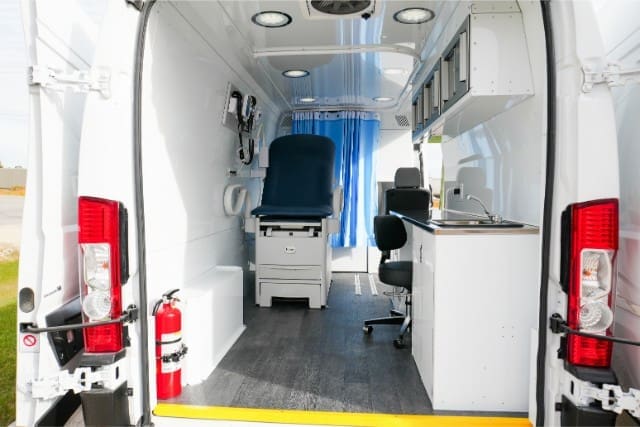
Older adults in towns like Carrington or Garrison often live with conditions like high blood pressure, diabetes, or arthritis. These are manageable, but not if left alone. A mobile health clinic helps you catch these problems early.
Your team can provide:
- Vital checks: Blood sugar, blood pressure, cholesterol
- Lifestyle coaching: Nutrition, movement, sleep habits
- Simple tools: Tracking sheets, pill organizers, wellness kits
Staying ahead of these issues helps seniors avoid complications that lead to hospital stays or permanent care.
Non-emergency care and mobility support
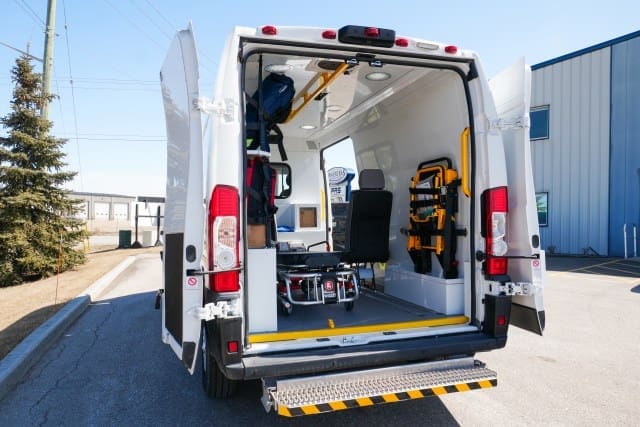
In towns like Kenmare or Hazen, there may be no easy option between “wait it out” and “call 911.” That’s where a mobile medical unit in North Dakota fills the gap.
You can help with:
- Minor injuries: Falls, cuts, pain checks
- Medical transportation: Offer non-urgent medical transportation to the nearest hospital.
- Post-hospital support: Light follow-ups, reassurance visits
Seniors feel safer knowing help is nearby, which gives them the confidence to keep living at home.
Primary care and post-hospital check-ins
Trips back and forth to the hospital or clinic can be exhausting, especially for someone in Ashley or Towner.
You can bring care right to them, including:
- Follow-up visits: After surgery or ER trips
- Wound care: Dressing changes, infection checks
- Chronic condition check-ins: COPD, heart disease, diabetes
Regular touchpoints prevent small issues from turning into major setbacks.
Mental health and counseling
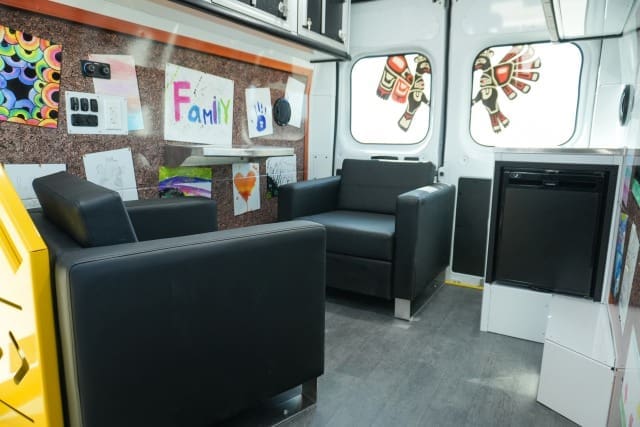
Loneliness and depression are big risks for older adults in rural areas. Some don’t talk about it, but that doesn’t mean they’re doing okay.
Your mobile health unit can offer:
- Private therapy sessions
- Grief support or anxiety care
- Substance use education and early help
Mental health support helps people feel less alone and more in control of their lives.
Medication support and safe use
Managing meds gets harder with age. If someone in McClusky takes six prescriptions a day, they might be mixing them up, or skipping doses altogether.
You can help by offering:
- Medication reviews: What’s working, what’s not
- One-on-one coaching: Dosage, timing, side effects
- Safe storage tips: Especially if memory issues are a concern
Clearer medication use keeps people healthy longer and prevents mistakes that could lead to hospitalization.
Caregiver support and coaching
You’re not just caring for the patient but also supporting their family. Caregivers in small towns often feel overwhelmed, alone, and underprepared.
Your team can help with:
- Caregiving tips: Lifting, bathing, scheduling meds
- Emotional support: Stress management, burnout help
- Community resources: Local respite programs or benefits
When caregivers feel confident, their loved ones get better care and stay at home longer.
Health screenings and early detection
Many seniors don’t know they have a health problem until it becomes serious. That’s where regular screenings come in, but only if they’re easy to access.
Your mobile medical clinics in North Dakota can offer:
- Hearing and vision screenings
- Cancer pre-screenings: Like breast, prostate, or colorectal checks
- Cognitive assessments: To catch early signs of memory loss or dementia
Catching issues early means more treatment options and less chance of needing full-time care.
Wellness check-ins for isolated seniors

Some folks aren’t sick, they’re just…alone. In very rural areas like Lignite or Anamoose, that isolation can go unnoticed for too long.
You can offer:
- Routine drop-ins: Just to say hello and ask how they’re doing
- Basic health screenings: Even if they don’t have a complaint
- Community event tie-ins: Like showing up at the farmer’s market or church picnic
These friendly, casual check-ins build trust and help spot issues before they become emergencies.
How mobile medical vehicles in North Dakota could mirror the success in Joplin
A few years ago, we partnered with the Community Clinic of Southwest Missouri in Joplin. After a tornado tore through the area overnight, access to healthcare dropped. People in smaller towns couldn’t get to clinics. Many didn’t have transportation. Others weren’t comfortable walking into a traditional healthcare setting. So, the clinic came to us with a clear goal: Bring care directly to the people.
We worked closely with their team to build a mobile medical unit that met their exact needs. It had a private exam room, a sink for handwashing, a vaccine fridge, storage, and just the right layout to feel comfortable and welcoming.
Here’s what that mobile clinic delivered:
- Primary care services: Physicals, blood pressure checks, lab draws, and immunizations
- Outreach to remote areas: The team visited towns up to two hours away on a regular route
- Affordable options: Sliding-scale pricing helped people who were uninsured or underinsured
- A consistent presence: Familiar staff and routine visits built trust in the community
This project became a lifeline for patients who had few, if any, options before. We’ve seen the real-world impact up close, and this kind of model can absolutely work with mobile medical vehicles in North Dakota, too. If you’re trying to reach more people, more often, without building new infrastructure, this is one way to do it.
Let’s discuss what you should consider before you commit to a mobile medical vehicle for your program.
What to consider before buying a mobile medical vehicle for sale in North Dakota
If you’re exploring mobile medical vehicles in North Dakota, you’re likely already thinking about how to reach more people, expand services, or cut down long travel times for care. But picking the right vehicle is more than just picking a floor plan. It’s about matching the vehicle to your goals, your staff, and your community’s real needs.
We’ve built and delivered many mobile health clinics in North Dakota and across the country, so here’s what we suggest thinking about before making a decision.
Know what kind of care your mobile clinic will deliver
Before you start browsing the first mobile clinic for sale in North Dakota you find online, pause and ask: What’s the gap we’re trying to fill?
Examples of care you might deliver:
- Preventive care in rural towns with no local clinic
- Mental health services in isolated communities
- Post-op check-ins or chronic disease management in senior-heavy areas
- Partner programs with tribal health or local nonprofits
The type of care you offer should drive the layout, equipment, and features of your mobile health unit.
Factor in North Dakota’s roads, weather, and distances
Mobile medical units in North Dakota need to be tough. Reaching a community near Williston in the winter or heading to Ellendale after a spring thaw requires your vehicle to perform at its best.
Key things to look for:
- Heavy-duty heating and cooling systems
- Solid insulation for cold months
- Easy-to-maneuver design for small-town parking lots
- Sturdy tires and comfortable suspension
A mobile medical vehicle for sale in North Dakota should be built for year-round road use, not just summer outreach events.
Plan for who will run your mobile medical clinic
We’ve seen organizations get excited about their new mobile medical unit, only to realize they didn’t have the staff or partnerships lined up to use it fully.
Questions to ask yourself:
- Will your current staff rotate into the unit, or will you hire mobile-only team members?
- Can you share the vehicle across departments or programs?
- Are there local partners (tribal health, schools, community groups) that could benefit too?
A successful mobile medical clinic depends on the people who power it, not just the build itself.
Choose a setup that allows flexibility and growth
What works today might shift in six months. Your mobile health clinics in North Dakota should be flexible enough to evolve with your programs.
Consider what 10 years could look like down the road and consider:
- A fridge, if you ever decide to offer temperature-specific medication/vaccines
- Floor-to-ceiling cabinetry for enough room to grow with your program
- Wi-Fi or telehealth equipment that can support new services
When you look at a mobile medical unit for sale in North Dakota, think long term. It should serve your community today and adapt for whatever comes next.
Ready to learn more about mobile medical vehicles in North Dakota?
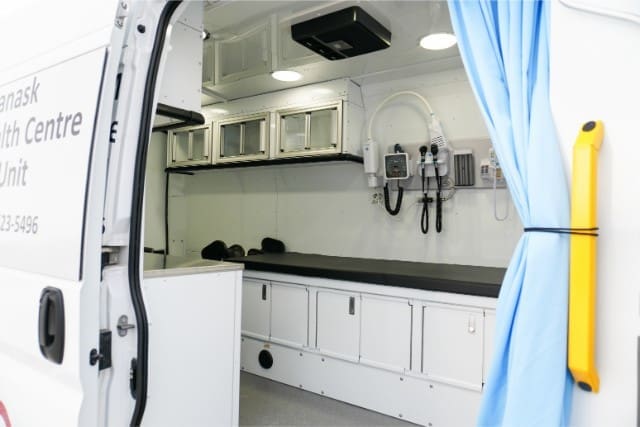
You landed on this page because you’re trying to figure out how to reach more people in your community, especially those who are isolated, aging, or just too far from the care they need. Maybe you’re tired of seeing patients skip follow-ups, or you’re worried about seniors moving away just to access basic healthcare.
Here’s what you’ve learned today:
- How mobile medical vehicles in North Dakota can help people stay healthy without leaving home
- What kind of care you can deliver with a mobile health unit
- Real-world examples, including how we helped a nonprofit launch a successful mobile program
- What to think about before buying a mobile medical vehicle for sale in North Dakota
At AVAN Mobility, we’ve helped organizations across the U.S. turn healthcare barriers into new beginnings. We don’t believe in one-size-fits-all vehicles. Our team takes the time to listen, learn about your program, and design a mobile medical clinic that fits your people, not just your budget. From tribal health and rural outreach to senior care and mental health support, we build with purpose.
We’re here to deliver a van that helps you deliver better care. If you’re ready to take the next step, click below to talk to one of our mobility experts.
Not quite ready yet? That’s okay. Here are a few helpful resources to keep learning:
- 10 steps to starting a mobile medical clinic: These 10 steps will steer your mobile medical program on the right track.
- Mobile medical clinics vs. traditional clinics: This article provides a detailed comparison between mobile medical clinics and brick-and-mortar ones.
The video below will also help you avoid roadblocks when starting a mobile medical unit in North Dakota.
